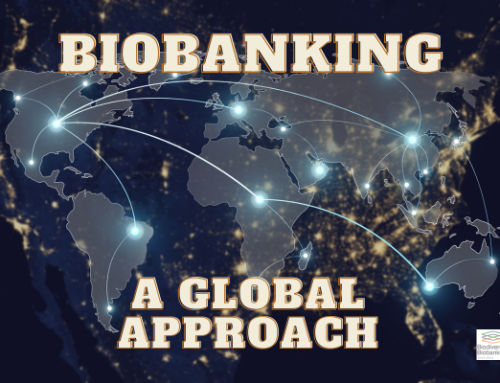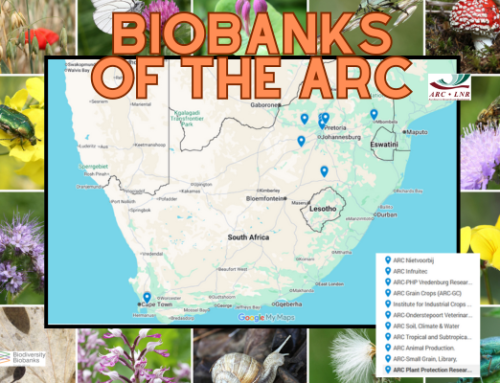Women of Biobanking: Science Heroines Who Changed The World
When it comes to solving our biggest challenges, it takes a (global) village. But throughout history, women in science have been isolated and ignored. Fortunately, that’s beginning to change.
“For far too many years, women were marginalised from the scientific conversation – women were not encouraged to study science, they struggled to get appointed in professional positions and they were paid less than men in the same position. Studies have shown that manuscripts by women scientists are often treated more negatively by reviewers than those by men or where the gender of the author is unclear,” says Professor Michelle Hamer, Project Lead of the Biodiversity Biobanks South Africa (BBSA). “Today, at last, women in science are getting their due.”
This is especially true in biodiversity biobanking in South Africa. The Biodiversity Biobanks SA provides a coordinating structure across several of South Africa’s existing biodiversity biobanks, with the main aim of increasing the range and quality of samples stored and/or distributed, and increasing and improving access for research and development.
The biobanks that are participating in the BBSA are staffed by women who are biotechnologists, veterinary scientists or technologists, microbiologists, crop scientists or botanists. Women who work with fungi, plants or bacteria, or rhinos.
But while all these women are doing amazing work, they – and all scientists – are building on the work done by the women scientists who came before.
These are our science heroines – the women who overcame the odds to change the world. Women like…
Ada Lovelace (1815-1842): Computing Before It Was Cool
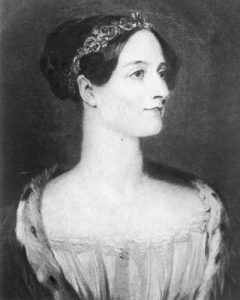
Ada Lovelace was the world’s first computer programmer – before computers even really existed. Pic © Wikimedia Commons
Biobanks today are Big Science: we work with huge datasets examining truly enormous amounts of data; far too much of it to be held in one head. Luckily, we have computers for that – and dedicated computer programs that allow us to go about our daily work. Without them, we wouldn’t be able to do much – and neither would you, most likely (you wouldn’t be able to read this article, for one thing). And that’s all thanks to mathematician/writer Augusta Ada King, Countess of Lovelace. When she was seventeen, she met Charles Babbage, who would go on to devise (but not complete) the Analytical Engine, the first general-purpose computer. Years later, Lovelace published a treatise on the potential uses of the engine – and a century later, the computer age was born.
Rosalind Franklin (1920-1958): Decoding DNA & The Molecular Revolution
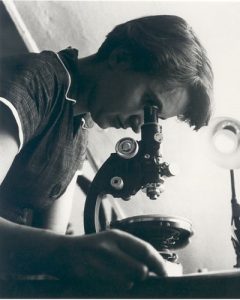
Rosalind Franklin’s work on the structure of DNA kicked off the molecular revolution. Pic © Wikimedia Commons
For most of human history, life was a mystery. Charles Darwin helped show us how life evolved (and evolves). And Gregor Mendel helped show us the basic mathematics of genetics. But it’s only in the mid-twentieth century that we discovered the structure of DNA – and kicked off the molecular revolution that transformed molecular biology, biotechnology, biochemistry and more. The race to discover the structure of DNA was fierce…but Rosalind Franklin, British X-ray crystallographer and chemist, was central to it (and also, incidentally, to the understanding of RNA and viruses, and even coal and graphite). Sadly, she died four years before the Nobel Prize was awarded for the discovery of DNA – earning her the title “the Dark Lady of DNA”.
Jane Goodall (1934-present): Understanding Animals By Sharing Spaces
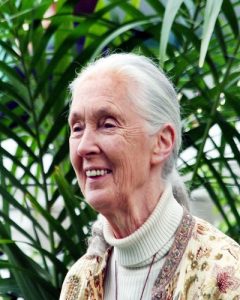
Jane Goodall decided the only way to understand chimpanzees was to live among them for years. So that’s just what she did. Pic © Wikimedia Commons
Animal biobanks store animal samples, rather than the animals themselves (you’re thinking of a zoo, or a nature reserve). But to get the most out of those samples, we need to have a better understanding of the lives those animals lead by studying them. We can then link the genetic make up of individuals to their growth, reproduction, health and ability to adapt to their environment. This helps in conservation but also in animal breeding programmes. That’s particularly true for wildlife biobanks such as the one at SANBI or livestock biobanks such as the one at Grootfontein for Sheep & Goats. And English primatologist Jane Goodall showed us how important studying individual animals is. She determined that the only way to truly understand chimpanzees was to live among them. And that’s just what she did, leading to decades of breakthroughs in understanding our closest living relatives.
So…did we miss anyone? Are there more women in science we should be celebrating? Of course there are!
Well, if there’s anyone you think should be on our list, just let us Contact Us – or engage with us on Facebook @BioBankSA, on Twitter @BioBankSA, or on LinkedIn: Biodiversity Biobanks South Africa.
And if you’re not quite sure what biobanking is all about, don’t worry, we’ve got you covered – check out Five Things You Always Wanted To Know About Biobanks (But Were Too Afraid To Ask).

What are biodiversity biobanks?
Biodiversity biobanks are repositories of biologically relevant resources, including reproductive tissues such as seeds, eggs and sperm, other tissues including blood, DNA extracts, microbial cultures (active and dormant), and environmental samples containing biological communities….


